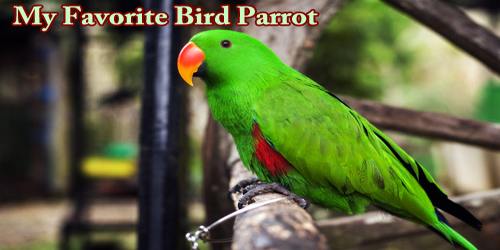Introduction: Parrot is one of the most fascinating avian (bird) species found on earth. In scientific terms it is also called as PSITTACINES. They are so lovely and colorful. Lots of people also keep them in their house, and parrots also love to live with humans.
Structure of Parrots: Almost all the subspecies of parrots are vividly multi-colored, making them very attractive to look at. Though Pesquet’s parrot (colored black and red only) and African grey parrot (grey with slightly red tail) being exceptions to this vividness.
Most of the distinctive characteristics of parrots are a powerful curved beak, mainly red, strikingly colorful fur, and strong legs to four toes, two pointing forward, and the other two with an erect posture to a backward. Though, they differ in dimensions across their bird, order in aspects of length. Parrots mainly feed mostly on tiny insects, fruits, seeds and nuts etc. Their curved and strong beak helps those holding round & hard slippery nuts and seeds, which they love to eat most.
Besides, they have a long life spanning more than 60 years on an average.
Species of Parrots: Hyacinth Macaw, found in the continent of South America, is the world’s largest parrot of about 100 centimeter length, while Kakapo of the New Zealand (an endangered species) being the heaviest one, weighing up to 3 kgs. Pigmy parrot, found in Papua New Guinea is smallest of all the parrot species, similar to the size of an adult human finger.
There are more than 300 species of parrots found worldwide, most famous of them being macaws, parakeets, lorikeets, lovebirds, cockatiels, cockatoos, kakapos, African Grey parrot etc. Parrots are among the most intelligent of all the bird species, mainly because of their fascinating ability to mimic the sounds they hear, to near perfection.
Locations: Even though parrots were found throughout the world, the optimum population is discovered in tropical areas, most often in the southern hemisphere’s rain forests.
A broad range of parrot species is often discovered around the Indian subcontinent due to the hot and humid weather.
They usually live in warm atmospheric areas to thick forests, however, as the habitat may also make semi-arid areas. Even certain species such as keas, thick-billed or maroon-faced parrots live to snowy alpine woodland. Usually, they live throughout the hollows for trees, and can also create a mound or any other spaces like their home.
Family life of Parrots: Parrots also, like humans, are very social being and love to live in large groups called flocks, which may consists up to 1,000 birds at a time. This provides them with security against predatory birds besides giving them an environment of harmony with their fellow beings to live in.
Parrots also lay eggs, like most other bird species. Their young ones, when they hatch, have only a thin layer of down feathers on their back. Their pin feathers (underdeveloped adult feathers) start to appear only after they grow three weeks old. The mother stays with the offspring to look after them, while father goes out to fetch them food. Within a month or two, these young ones grow up to fly off on their own.
Parrots can simply be called as loyal towards their partners like swan, as they are monogamous. They woo their mates usually with attractive feather & tail displays and musical sounds.
Parrots in ancient mythology: This marvelous creature’s beauty, intellectual ability, or highly socializing nature has fascinated human minds across cultures seeing as a long time ago. There are several myths associated with parrots, legends, literary writings, or artistic works, and so on.
Like, in the South American and Mayan civilizations parrots and macaws used to be considered as a spiritual connection between the mortal & immortal world, besides symbolizing their feathers for the rainbow. ‘Kyash Kachina’ used to be worshipped as a parrot god in Native American cultures.
There is a well-known legend of Yoruba connected with the African Grey parrot; parrot has been a part of different Buddhist or English folklore.
In relation to mankind: Since parrots are very fabulous to look at and, at the same time are intelligent also in the sense that they can copycat the sounds/voices of the humans and other animals to the edge of perfection, they naturally attracts humans towards them.
By virtue of their socializing behavior they easily mingle and make friends with us. Because of their vivid color scheme and mimicking capability we tend to keep them with us for a long and therefore, cage them. Besides, they are very smart pets, and often help their owner in earning money, by way of assisting them to do some prediction, or some kind of mimicry activities.
Parrots are also widely employed in circuses to entertain the people by undertaking various types of funny and daring acts.
But, since they are high-maintenance pets, in return they also require enough attention, affection, cuddling, exercise and patience, (as they are known to be very uttering with the sounds of screams, screeches etc. when they are very happy/bored) from their owner.
Conclusion: Each creature on earth may have developed or existed for an intent it must preserve ecological equilibrium. We human beings are part of this, and we have to live in harmony with any other creature, mainly those who are small or vulnerable. Some among them will be parrots. It is our responsibility to support them flourish or survive, be it in captivity or even in wild conditions.
Caging and captivating this free-flying bird must be discouraged, but even if it’s so, one should take good care of them. With the help of awareness and innovative ways like, ecotourism based on bird-watching, informational speeches about them can help them save and increase their remaining species’ population.
















